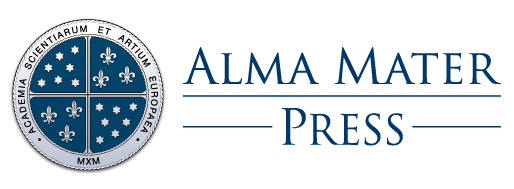Information Society, E-Records and the New Archival Science
DOI:
https://doi.org/10.33700/2670-451X.25.1.141-152(2015)Keywords:
e-records, long term preservation, archival scienceAbstract
The study shows how information society is reflected in e-records (volatility, dynamism, mixed private and public spheres), how it transformed the records themselves (no physical aspect, complicated structure, separated elements), and how it conquered the human memory. The basic dilemma of long term preservation is that erecords are dependent upon hardware and software which change rapidly, therefore we are unable to preserve them unchanged. The study talks shortly about integrity and authenticity of e-records which are basic requirements, and then outlines the major preservation strategies (migration, emulation, technology preservation, post-custodial archives, cloud computing) used by archives. In the digital world archival science adopted a lot from information science which caused that standards (ISADg, EAD, OAIS) are the new milestones of archival science. The greatest „yield” of this cooperation is that the data management and procedures are automatable. However, archivists must keep their classical synthetic work in digital world, too: to know and describe the record creator agency, its economic, political and societal environment, to build the system of fonds, etc.
Downloads
References
Cook, Terry (1996). Archives in the Post-Custodial World; Interaction of Archival Theory and Practice since the Publication of the Dutch Manual in 1898. In: Archivum XLIII.
Day, Michael (2005). Instalment on „Metadata”. In: DCC Digital Curation Manual 2005. Available at http://www.dcc.ac.uk/sites/default/files/documents/resource/curation-manual/chapters/metadata/metadata.pdf (accessed on 27.04.2015).
Duranti, Luciana & Thibodeau, Kenneth. Interpares 2: Experimental, Interactive and Dynamic Records, Appendix 2. Available at http://www.interpares.org/ip2/display_file.cfm?doc=ip2_book_appendix_02.pdf (accessed on 27.04.2015).
Eastwood, Terry (2002). The Appraisal of Electronic Records: What is New? In: Comma 2002/1-2.
Granger, Stewart (2000). Emulation as a Digital Preservation Strategy. In: D-Lib Magazine, October 2000, vol. 6. No. 10. Available at http://www.dlib.org/dlib/october00/granger/10granger.html (accessed on 27.04.2015).
Greene, Mark A. (2002). The Power of Meaning: The Archival Mission in the Postmodern Age. In: American Archivist, vol. 65, No. 1, 2002.
Heslop, Helen & Davis, Simon & Wilson, Andrew (2002). An Approach to the Preservation of Digital Records, National Archives of Australia, December 2002. Available at http://www.naa.gov.au/Images/an-approach-green-paper_tcm16-47161.pdf (accessed on 27.04.2015).
(InterPARES 1) Requirements for Assessing and Maintaining the Authenticity of Electronic Records, Appendix 2. Available at http://www.interpares.org/display_file.cfm?doc=ip1_template_for_analysis.pdf (accessed on 27.04.2015).
(InterPARES 2) Requirements for Assessing and Maintaining the Authenticity of Electronic Records. InterPARES, March 2002. Available at http://www.interpares.org/display_file.cfm?doc=ip1_authenticity_requirements.pdf (accessed on 27.04.2015).
(InterPARES 3) Available at http://www.interpares.org/display_file.cfm?doc=ip1_atf_report.pdf (accessed on 27.04.2015).
(National Archives of Australia) Available at http://www.naa.gov.au/Images/an-approach-green-paper_tcm16-47161.pdf (accessed on 27.04.2015).
(Planets) Available at http://www.planets-project.eu/docs/comms/PLANETS_BROCHURE.pdf (accessed on 27.04.2015).
Rothenberg, Jeff (1999). Avoiding Technological Quicksand: Finding a Viable Foundation for Digital Preservation. In: Council on Library and Information Resources, Washington 1999. Available at http://www.clir.org/pubs/reports/rothenberg/contents.html (accessed on 27.04.2015).

